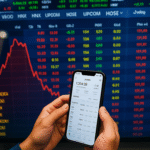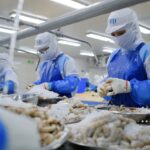
- EUR/USD moves sideways at around 1.1550 in the European morning on Tuesday.
- The cautious market mood caps the pair’s upside.
- The US Dollar holds its ground ahead of the Fed policy meeting.
After starting the week on a bullish note and climbing above 1.1600, EUR/USD lost its bullish momentum and erased a large portion of its daily gains on Monday to close marginally higher. The pair stays relatively calm and moves sideways at around 1.1550 in the European morning on Tuesday.
Euro PRICE This week
The table below shows the percentage change of Euro (EUR) against listed major currencies this week. Euro was the strongest against the Japanese Yen.
| USD | EUR | GBP | JPY | CAD | AUD | NZD | CHF | |
|---|---|---|---|---|---|---|---|---|
| USD | -0.14% | 0.05% | 0.17% | -0.14% | -0.81% | -0.87% | 0.10% | |
| EUR | 0.14% | 0.07% | 0.30% | 0.01% | -0.55% | -0.72% | 0.25% | |
| GBP | -0.05% | -0.07% | 0.26% | -0.06% | -0.61% | -0.78% | 0.18% | |
| JPY | -0.17% | -0.30% | -0.26% | -0.31% | -1.28% | -1.37% | -0.49% | |
| CAD | 0.14% | -0.01% | 0.06% | 0.31% | -0.60% | -0.73% | 0.23% | |
| AUD | 0.81% | 0.55% | 0.61% | 1.28% | 0.60% | -0.17% | 0.79% | |
| NZD | 0.87% | 0.72% | 0.78% | 1.37% | 0.73% | 0.17% | 0.97% | |
| CHF | -0.10% | -0.25% | -0.18% | 0.49% | -0.23% | -0.79% | -0.97% |
The heat map shows percentage changes of major currencies against each other. The base currency is picked from the left column, while the quote currency is picked from the top row. For example, if you pick the Euro from the left column and move along the horizontal line to the US Dollar, the percentage change displayed in the box will represent EUR (base)/USD (quote).
The positive shift seen in risk mood made it difficult for the US Dollar (USD) to find demand early Monday and helped EUR/USD stretch higher. Early Tuesday, markets seem to have adopted a cautious stance, with US stock index futures losing about 0.5% in the European trading hours.
Although investors turned optimistic about a de-escalation of the Israel-Iran conflict after the Wall Street Journal reported on Monday that Iran was looking to end hostilities and resume talks about its nuclear program, the latest developments tell a different story. Citing Iran’s IRNA news agency, Reuters reported that Iran has recently launched a “more powerful” new wave of missiles toward Israel. Additionally, a senior commander for the Iranian army noted that a new wave of hundred of drones will soon hit Israel.
Meanwhile, European Central Bank (ECB) policymaker Yannis Stournaras told Greek media on Tuesday that the ECB has reached a point of equilibrium and added that any further rate cuts will depend on data.
In the second half of the day, Retail Sales and Industrial Production data for May will be featured in the US economic calendar. Ahead of the Federal Reserve’s monetary policy announcements on Wednesday, investors are likely to ignore these releases. In case markets remain risk-averse, with Wall Street’s main indexes opening on a bearish note, the USD could hold its ground and make it difficult for EUR/USD to regain its traction.
EUR/USD Technical Analysis

The Relative Strength Index (RSI) indicator on the 4-hour chart stays slightly above 50 and EUR/USD fluctuates at around the 20-period Simple Moving Average (SMA), reflecting a lack of directional momentum.
On the downside, immediate support level is located at 1.1550 (mid-point of the ascending channel) before 1.1500-1.1490 (round level, 50-period SMA) and 1.1460 (lower limit of the ascending channel). Looking north, resistance levels could be seen at 1.1600 (round level, static level), 1.1640 (upper limit of the ascending channel) and 1.1700 (static level, round level).
Euro FAQs
The Euro is the currency for the 19 European Union countries that belong to the Eurozone. It is the second most heavily traded currency in the world behind the US Dollar. In 2022, it accounted for 31% of all foreign exchange transactions, with an average daily turnover of over $2.2 trillion a day. EUR/USD is the most heavily traded currency pair in the world, accounting for an estimated 30% off all transactions, followed by EUR/JPY (4%), EUR/GBP (3%) and EUR/AUD (2%).
The European Central Bank (ECB) in Frankfurt, Germany, is the reserve bank for the Eurozone. The ECB sets interest rates and manages monetary policy. The ECB’s primary mandate is to maintain price stability, which means either controlling inflation or stimulating growth. Its primary tool is the raising or lowering of interest rates. Relatively high interest rates – or the expectation of higher rates – will usually benefit the Euro and vice versa. The ECB Governing Council makes monetary policy decisions at meetings held eight times a year. Decisions are made by heads of the Eurozone national banks and six permanent members, including the President of the ECB, Christine Lagarde.
Eurozone inflation data, measured by the Harmonized Index of Consumer Prices (HICP), is an important econometric for the Euro. If inflation rises more than expected, especially if above the ECB’s 2% target, it obliges the ECB to raise interest rates to bring it back under control. Relatively high interest rates compared to its counterparts will usually benefit the Euro, as it makes the region more attractive as a place for global investors to park their money.
Data releases gauge the health of the economy and can impact on the Euro. Indicators such as GDP, Manufacturing and Services PMIs, employment, and consumer sentiment surveys can all influence the direction of the single currency. A strong economy is good for the Euro. Not only does it attract more foreign investment but it may encourage the ECB to put up interest rates, which will directly strengthen the Euro. Otherwise, if economic data is weak, the Euro is likely to fall. Economic data for the four largest economies in the euro area (Germany, France, Italy and Spain) are especially significant, as they account for 75% of the Eurozone’s economy.
Another significant data release for the Euro is the Trade Balance. This indicator measures the difference between what a country earns from its exports and what it spends on imports over a given period. If a country produces highly sought after exports then its currency will gain in value purely from the extra demand created from foreign buyers seeking to purchase these goods. Therefore, a positive net Trade Balance strengthens a currency and vice versa for a negative balance.
Information on these pages contains forward-looking statements that involve risks and uncertainties. Markets and instruments profiled on this page are for informational purposes only and should not in any way come across as a recommendation to buy or sell in these assets. You should do your own thorough research before making any investment decisions. FXStreet does not in any way guarantee that this information is free from mistakes, errors, or material misstatements. It also does not guarantee that this information is of a timely nature. Investing in Open Markets involves a great deal of risk, including the loss of all or a portion of your investment, as well as emotional distress. All risks, losses and costs associated with investing, including total loss of principal, are your responsibility. The views and opinions expressed in this article are those of the authors and do not necessarily reflect the official policy or position of FXStreet nor its advertisers. The author will not be held responsible for information that is found at the end of links posted on this page.
If not otherwise explicitly mentioned in the body of the article, at the time of writing, the author has no position in any stock mentioned in this article and no business relationship with any company mentioned. The author has not received compensation for writing this article, other than from FXStreet.
FXStreet and the author do not provide personalized recommendations. The author makes no representations as to the accuracy, completeness, or suitability of this information. FXStreet and the author will not be liable for any errors, omissions or any losses, injuries or damages arising from this information and its display or use. Errors and omissions excepted.
The author and FXStreet are not registered investment advisors and nothing in this article is intended to be investment advice.








